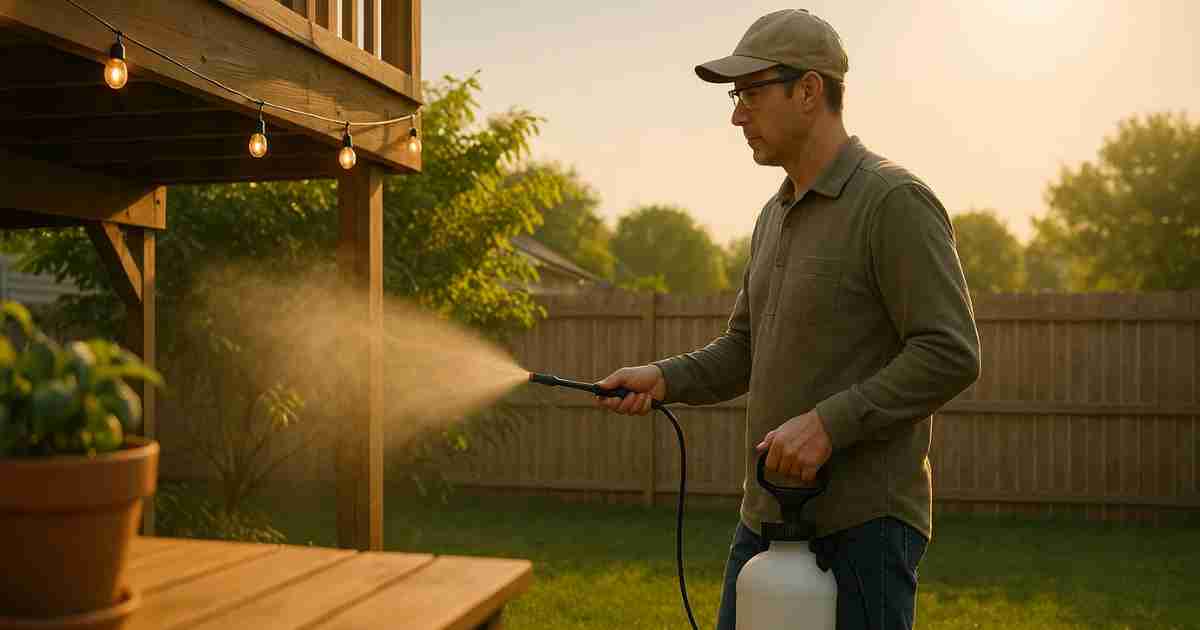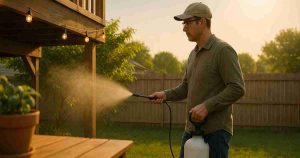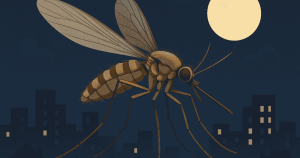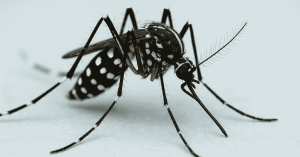A simple timing plan that saves product, protects kids and pets, and actually cuts bites
The quick answer
Most homes get the best results at two windows. One is one hour before sunset to two hours after sunset. The other is first light to two hours after sunrise. These windows match when many mosquitoes fly and when wind often drops. Label rules always come first.
A short story from my yard
Last summer I tried to spray at random times. I used more product and still got chewed. Then I switched to a sunset routine on calm days. I also fixed standing water and trimmed the hedges. The bite count fell in under a week. I spent less and felt sane again.
Morning or evening which is better
Evening wins for many backyards because several species fly then and bees are less active. Morning can also work on calm days. If your area has day biting Aedes you can treat at first light or late afternoon as long as wind is low and the label allows it.
Why timing matters
Spray in heat and wind and droplets drift or evaporate. Spray before rain and the product washes off. Time it right and more of the spray reaches resting spots where mosquitoes park during the day. That is how you turn the same bottle into better results.
Species cheat sheet
Not all mosquitoes keep the same hours.
- Aedes aegypti often bites after sunrise and near sunset. It can bite in the day indoors and outdoors.
- Culex tends to bite after sunset and through the night.
- Anopheles varies by species.
Aim your timing at the peak in your area.
Weather rules that save money
Use this quick table before you spray.
| Check | Good to go | Hold off | Why it matters |
|---|---|---|---|
| Wind | Gentle breeze under 10 mph | Windy or gusty | Drift and poor coverage |
| Rain forecast | Dry for 24 hours | Rain expected soon | Wash off risk |
| Temperature | Mild to warm | Very hot midday or under 50 F | Evaporation or low activity |
| Time of day | Dusk or dawn window | Midday for most species | Fewer active targets |
| People and pets | Indoors or away | Present in the area | Safety first |
The wind and temperature lines above come from public health and EPA guidance for mosquito adulticide conditions around dusk and dawn along with basic label safety. Always follow your product label. epa.gov+1
Exact step by step plan
- Pick your window. Sunset window or sunrise window.
- Check wind. Under 10 mph.
- Check rain. Dry for the next day.
- Walk the yard. Look for cool dark resting spots under decks along fences in shrubs and around sheds.
- Move kids and pets inside. Cover fish ponds.
- Put on gloves and eye protection.
- Mix and set your sprayer as the label says.
- Spray target surfaces with slow even passes. Hit the underside of leaves and shaded walls.
- Air out. Keep people and pets away until the label says it is safe.
- Log the date wind and result. Adjust your next window based on bites you notice.
Where to spray at home indoors and outdoors
Indoors use sprays only where the label allows. Mosquitoes rest in cool dark humid spots such as under sinks closets and laundry areas. Outdoors focus on shade and vegetation near where you sit. Skip flowers to protect pollinators.
Safety for kids and pets
Use only EPA registered products and read the label. Keep sprays away from eyes and mouths. Do not spray in enclosed spaces. Move toys pet bowls and open food. Bring everyone back only when the label allows it. For skin protection choose an EPA registered repellent for family members.
Make spraying work even better
Spraying works best when you also remove breeding spots. Dump standing water from plant saucers toys bird baths and buckets. Trim dense shrubs where adults rest. A strong box fan where you sit can cut bites while you relax. Southern Living
What if you have day biters
If you notice bites at noon you may be dealing with Aedes. Use the first light window or the late afternoon window when heat drops and wind calms. Keep screens tight and fix indoor resting spots. Use a skin repellent if you must be outside.
A tiny case study
My neighbor had a shady side yard and a bird bath he forgot to clean. He sprayed at sunset once a week and added Bti dunks to the bird bath he kept for the robins. He also ran a fan by the patio at dinner time. Bites dropped and his kids wanted to eat outside again. Southern Living
Tune your schedule for your state
Mosquito season shifts by region. In warm and wet zones you may need a steady weekly plan. In drier or cooler zones you can stretch your intervals. If a disease alert goes out in your county your local program may also spray at night during calm conditions. Watch local guidance.
TL;DR
Spray when mosquitoes are active and wind is low. Evening and early morning work best for most yards. Day biting Aedes can peak at dawn and late afternoon. Night biting Culex peak after sunset. Skip rain and strong wind. Follow the label. Protect kids and pets.
FAQ
Is evening always better than morning
Both work in many places. Try evening first because wind often drops and night biters rise. If you still get day bites add a sunrise window. American Mosquito Control Association+1
What if my town sprays at night should I stop
No. Their passes target wide areas during calm hours. Keep your home routine and focus on your yard resting spots. Follow local alerts. CDC
Can I spray before a barbecue later today
If wind is low and no rain is coming a sunset pass can help. Keep people and pets away during and after as the label says.
Do ultrasonic mosquito devices change the best time
There is no strong proof they work. Timing rules still apply. Focus on calm hours and real control like water removal and repellents. Southern Living
What if I see mosquitoes inside
Treat allowed indoor resting spots and fix screens. Use an indoor safe product only as labeled and run a fan to make landing harder.
Is it safe around kids and pets
Yes when you choose EPA registered products and follow the label. Keep kids and pets away during treatment and bring them back when the label allows.
How often should I spray
Weekly can work during peak season. Log results and stretch or shorten based on bites and weather. Label directions set the upper limit.




